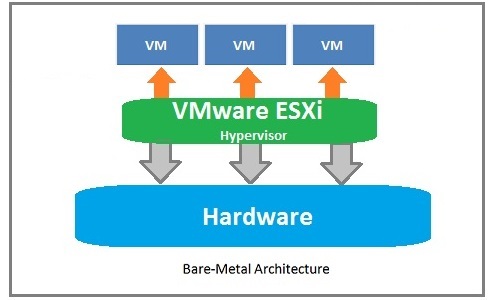Hypervisor Definition

A hypervisor is a function which abstracts — isolates — operating systems and applications from the underlying computer hardware. This abstraction allows the underlying host machine hardware to independently operate one or more virtual machines as guests, allowing multiple guest VMs to effectively share the system’s physical compute resources, such as processor cycles, memory space, network bandwidth and so on. A hypervisor is sometimes also called a virtual machine monitor.
Hypervisors provide several benefits to the enterprise data center. First, the ability of a physical host system to run multiple guest VMs can vastly improve the utilization of the underlying hardware. Where physical (nonvirtualized) servers might only host one operating system and application, a hypervisor virtualizes the server, allowing the system to host multiple VM instances — each running an independent operating system and application — on the same physical system using far more of the system’s available compute resources.
VMs are also very mobile. The abstraction that takes place in a hypervisor also makes the VM independent of the underlying hardware. Traditional software can be tightly coupled to the underlying server hardware, meaning that moving the application to another server requires time-consuming and error-prone reinstallation and reconfiguration of the application. By comparison, a hypervisor makes the underlying hardware details irrelevant to the VMs. This allows any VMs to be moved or migrated between any local or remote virtualized servers — with sufficient computing resources available — almost at-will with effectively zero disruption to the VM; a feature often termed live migration.
VMs are also logically isolated from each other — even though they run on the same physical machine. In effect, a VM has no native knowledge or dependence on any other VMs. An error, crash or malware attack on one VM does not proliferate to other VMs on the same or other machines. This makes hypervisor technology extremely secure.
Finally, VMs are easier to protect than traditional applications. A physical application typically needs to be first quiesced and then backed up using a time-consuming process that results in substantial downtime for the application. A VM is essentially little more than code operating in a server’s memory space. Snapshot tools can quickly capture the content of that VM’s memory space and save it to disk in moments — usually without quiescing the application at all. Each snapshot captures a point-in-time image of the VM which can be quickly recalled to restore the VM on demand.
Types of hypervisors
Hypervisors are traditionally implemented as a software layer — such as VMware vSphere or Microsoft Hyper-V — but hypervisors can also be implemented as code embedded in a system’s firmware. There are two principal types of hypervisor. Type 1 hypervisors are deployed directly atop the system’s hardware without any underlying operating systems or other software. These are called “bare metal” hypervisors and are the most common and popular type of hypervisor for the enterprise data center. Examples include vSphere or Hyper-V. Type 2 hypervisors run as a software layer atop a host operating system and are usually called “hosted” hypervisors like VMware Player or Parallels Desktop. Hosted hypervisors are often found on endpoints like PCs.
What are hypervisors used for?
Hypervisors are important to any system administrator or system operator because virtualization adds a crucial layer of management and control over the data center and enterprise environment. Staff members not only need to understand how the respective hypervisor works, but also how to operate supporting functionality such as VM configuration, migration and snapshots.
The role of a hypervisor is also expanding. For example, storage hypervisors are used to virtualize all of the storage resources in the environment to create centralized storage pools that administrators can provision — without having to concern themselves with where the storage was physically located. Today, storage hypervisors are a key element of software-defined storage. Networks are also being virtualized with hypervisors, allowing networks and network devices to be created, changed, managed and destroyed entirely through software without ever touching physical network devices. As with storage, network virtualization is appearing in broader software-defined network or software-defined data center platforms.
